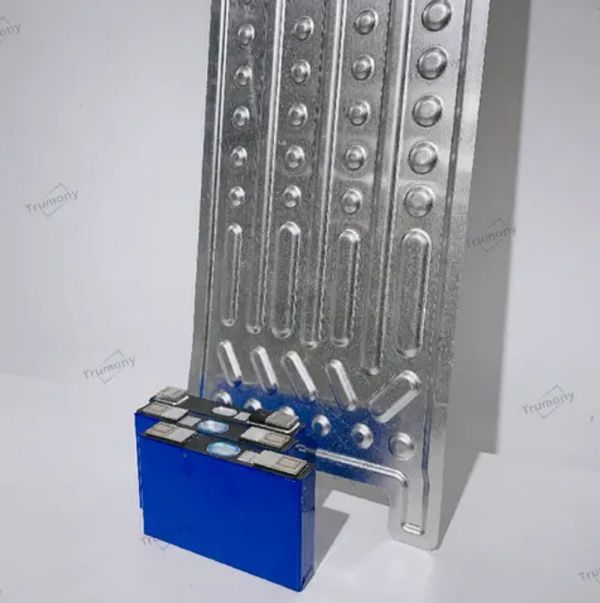Superior Heat Dissipation Efficiency
Liquids have a significantly higher specific heat capacity compared to air. For instance, water’s specific heat capacity is about four times that of air. In electric vehicle battery cooling systems, liquid coolants can rapidly absorb the large amounts of heat generated by the battery and effectively dissipate it through heat exchangers. In contrast, air cooling relies on airflow, which is limited by air’s low thermal conductivity, resulting in much lower efficiency. Tests have shown that during high-power discharge, liquid cooling can reduce battery temperatures by 10–15°C, whereas air cooling only achieves a reduction of 5–8°C.
Excellent Temperature Uniformity
Maintaining uniform temperature across battery cells is critical for battery performance and longevity. Liquid cooling systems, thanks to their precisely designed coolant channels, ensure even coolant distribution around each cell. This helps control the maximum temperature difference within the battery pack to just 2–3°C. Air cooling, due to uneven airflow, often leads to temperature differences of 5–10°C, which can accelerate battery aging and degrade overall performance.
Space-Saving Design
Thanks to the high efficiency of liquid heat transfer, the components required for a liquid cooling system are more compact. This is especially advantageous in electric vehicles, where space is limited. Air cooling systems require bulky heat sinks and ventilation ducts to function effectively, taking up more space and potentially compromising vehicle layout and passenger comfort. After implementing a liquid cooling system, one EV manufacturer reported a 10–15% improvement in battery pack space utilization, enabling better integration of other components and increased passenger space.
Low Noise Operation
Air cooling systems rely on fans, which generate noticeable noise—especially under heavy load—affecting the cabin’s quietness and overall driving experience. In contrast, liquid cooling systems operate silently, as they rely on coolant circulation and contain no noise-producing components like fans. This results in a quieter and more comfortable vehicle interior.
Excellent Environmental Adaptability
Whether in scorching summers or freezing winters, liquid cooling systems can adjust coolant flow and temperature to maintain optimal battery conditions. Air cooling, however, is more sensitive to ambient temperatures. In hot climates, high ambient air temperatures reduce the system’s cooling efficiency. In cold conditions, air cooling can lead to overcooling, negatively impacting battery performance. Liquid cooling ensures stable thermal control across a wide range of environmental conditions.

